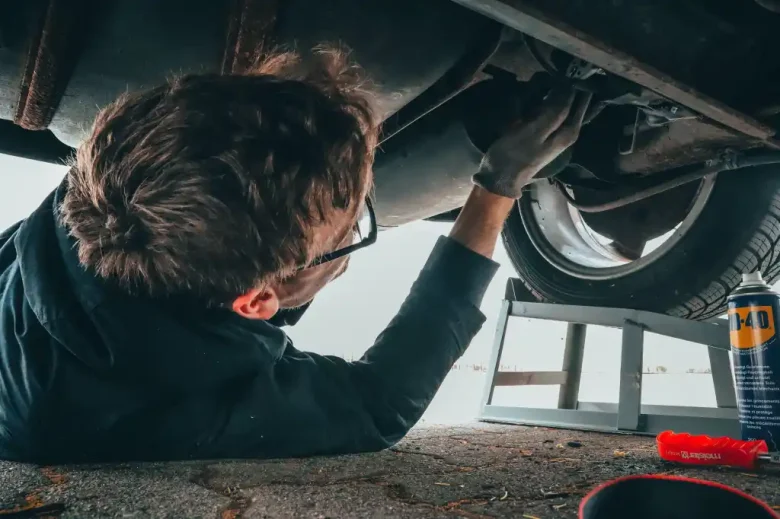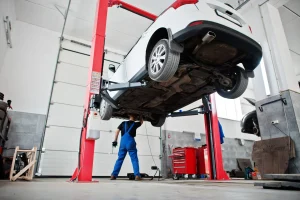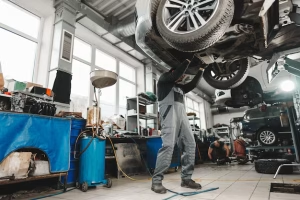Car repairs can often be an unexpected and expensive burden, but with some basic knowledge and a willingness to learn, you can tackle many issues on your own without draining your wallet. DIY car repair is not only a cost-effective solution but also an empowering skill that can save you time and give you greater control over your vehicle’s maintenance. With the right tools, preparation, and a few essential tips, fixing your car at home becomes a manageable task for anyone.
The Benefits of DIY Car Repair
One of the most significant advantages of DIY car repair is the money saved on labor costs. Mechanics often charge high fees for simple repairs that you can easily perform with a bit of guidance. By learning to handle these tasks yourself, you only need to invest in tools and parts, which can often be sourced at reasonable prices. Over time, the cumulative savings can be substantial, making DIY car repair a practical choice for budget-conscious vehicle owners.
Additionally, repairing your car at home allows you to develop a deeper understanding of how it works. This knowledge can help you identify potential issues early and avoid being overcharged or misled by service providers. It also provides the satisfaction of knowing you can handle common car problems on your own, adding to your confidence as a driver.
Essential Tools for DIY Repairs
Before diving into car repairs, it’s crucial to equip yourself with the right tools. A basic toolkit should include screwdrivers, wrenches, pliers, a socket set, and a tire iron. For more specific tasks, items like a car jack, jack stands, a torque wrench, and an oil filter wrench are essential. An OBD-II scanner is also a valuable investment, as it can help you diagnose engine issues by reading error codes. Having these tools on hand ensures you’re prepared for a wide range of repairs and maintenance tasks.
Start with Simple Repairs
If you’re new to DIY car repair, it’s best to begin with straightforward tasks that don’t require advanced skills or specialized equipment. Changing your car’s oil is an excellent starting point. This routine maintenance task is simple, quick, and significantly cheaper than having it done at a garage. Similarly, replacing air filters, wiper blades, and lightbulbs are easy fixes that can improve your vehicle’s performance and safety.
Another beginner-friendly repair is checking and replacing your car’s battery. If your vehicle struggles to start, a weak or dead battery might be the issue. Using a multimeter, you can test the battery’s voltage to determine whether it needs to be replaced. The replacement process involves disconnecting the terminals, removing the old battery, and securing a new one in its place. These tasks require minimal tools and are easy to perform with basic instructions.
Learn to Diagnose Common Problems
A significant part of DIY car repair is learning to diagnose common problems. Unusual noises, changes in performance, or dashboard warning lights can often point to specific issues. For example, squealing brakes may indicate worn-out brake pads, while a check engine light could signal anything from a loose gas cap to a more serious engine problem. By using resources like repair manuals, online guides, or video tutorials, you can identify the root cause of many issues and take the appropriate steps to fix them.
Prioritize Regular Maintenance
Preventative maintenance is one of the best ways to keep your car running smoothly and avoid costly repairs. Tasks like checking and maintaining tire pressure, inspecting fluid levels, and replacing spark plugs are relatively simple but make a big difference in your car’s performance. Regular oil changes, brake inspections, and air filter replacements ensure that your vehicle operates efficiently and reduces the risk of breakdowns.
Safety Tips for DIY Car Repair
While DIY car repair is rewarding, safety should always be a top priority. Always work on a level surface and use jack stands to secure the vehicle when lifting it. Avoid relying solely on a car jack, as it can fail unexpectedly. Wearing gloves and safety glasses can protect you from injuries, and having a fire extinguisher nearby is a wise precaution when working with flammable materials.
Additionally, take the time to read your vehicle’s owner manual and follow the recommended guidelines for maintenance and repairs. Understanding your car’s specifications ensures you use the correct parts and procedures, reducing the risk of errors. If you’re ever unsure about a repair, seek advice from trusted sources or consult a professional to avoid causing further damage.
Knowing Your Limits
While many car repairs can be performed at home, it’s essential to recognize when a task is beyond your skill level. Complex repairs involving the engine, transmission, or advanced electrical systems may require specialized tools and expertise. Attempting these repairs without proper knowledge can lead to costly mistakes or safety hazards. Knowing your limits and seeking professional help when needed is just as important as mastering DIY techniques.
The Satisfaction of DIY Car Repair
Beyond the financial savings, DIY car repair offers a sense of accomplishment and independence. Completing a repair on your own provides a unique sense of pride and reinforces your ability to handle challenges. As you gain experience, you’ll feel more confident tackling increasingly complex tasks, transforming car maintenance into a rewarding and enjoyable hobby.
Conclusion
DIY car repair is a practical and empowering way to maintain your vehicle without breaking the bank. By starting with simple tasks, investing in essential tools, and prioritizing safety, you can save money while gaining valuable skills and knowledge. Regular maintenance and a proactive approach to identifying issues will keep your car in excellent condition and help you avoid costly repairs down the road. Whether you’re a beginner or an experienced car enthusiast, DIY car repair is a fulfilling endeavor that puts you in control of your vehicle’s care.



